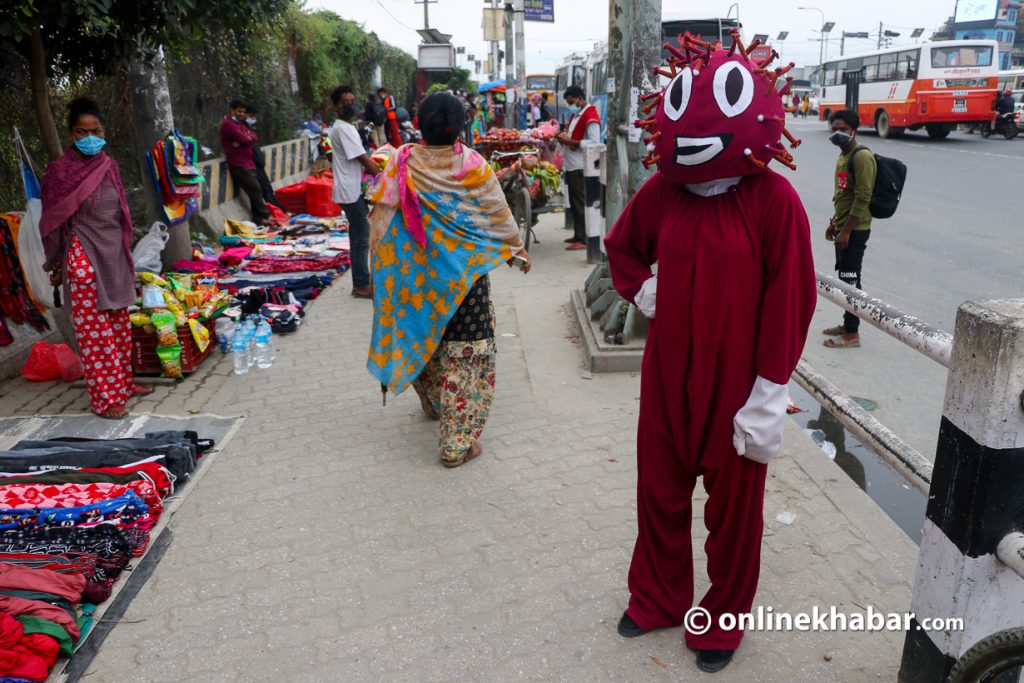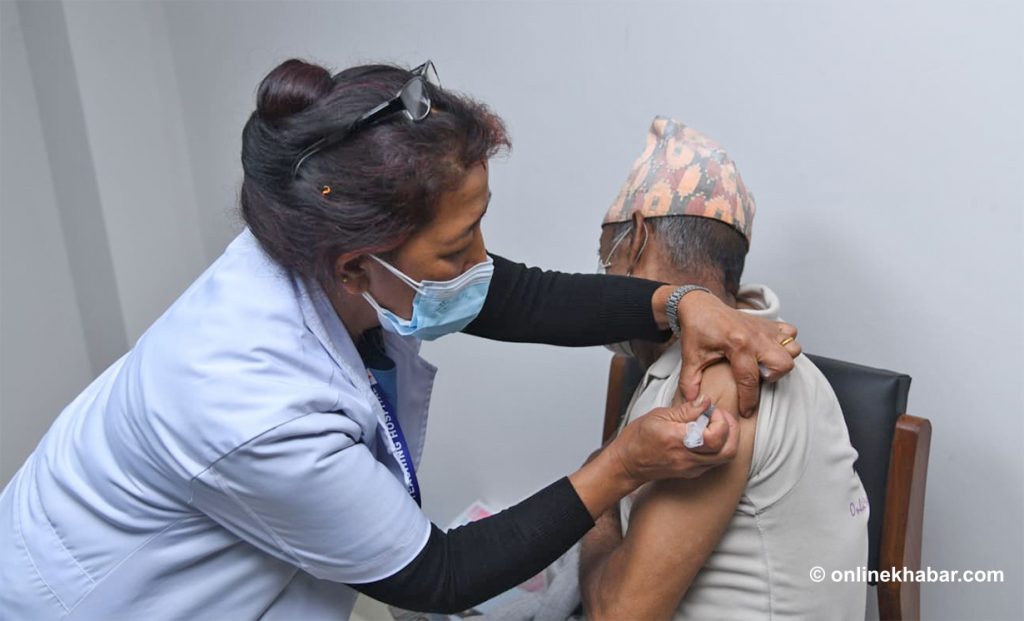On May 4, 2022, Nepal reported the death of a 45-year-old woman from Covid, a month and a half after the last fatality from the disease on March 22. This coincided with a slight increase in Covid cases and the detection of a XE variant of Omicron, in India.
The XE variant was first detected in the UK in January and in India in April. Though Nepal is yet to detect the new variant, there are concerns that it could appear here anytime as thousands of people enter the country through the India-Nepal open border each day.
And, with crowds gathering for election rallies and mass meetings in the run-up to the local elections, Nepal, experts fear, may face a new wave of Covid.
Today, we explain the risk of the XE variant of the virus to you.
What is a variant?

A variant is a slight change in the original form of a virus. Every virus changes its composition over time, and the coronavirus is no exception. These changes may be minimal in most cases, but some mutations significantly impact transmissibility and severity.
Following the emergence of new variants, the World Health Organization (WHO), in late 2020, introduced two categories: variant of interest (VOI) and variant of concern (VOC). The purpose of this differentiation, according to the WHO, is “to prioritise global monitoring and research, and ultimately to inform the ongoing response to the Covid pandemic.”
A variant known to affect virus characteristics such as transmissibility and disease severity, and identified with significant community transmission, is called a variant of interest. A variant with genetic alteration, increasing transmissibility and severity of illness and potentially affecting the diagnostic treatment and vaccine, is called a variant of concern.
According to the WHO, a variant with a genetic change that is suspected to affect virus characteristics and poses a future risk of community infection falls under the category of a variant under monitoring.
What is Omicron?

Omicron is a variant of the coronavirus, listed as a variant of concern by the WHO on November 26, 2021. First identified in Botswana and South Africa, it spread faster than any other form of the virus identified previously and caused the third wave in Nepal early this year. It has spread to more than 89 countries and developed sub-variants, including the widely transmittable BA.1 and BA.2. Although it is far more transmissible than the Delta variant, it is found to be less severe than the previous variants.
What is the XE variant?
XE is a recombinant variant of the BA.1 and BA.2 strains of Omicron. A recombinant variant is an offspring of genetic materials from related viruses–in this case, BA.1 and BA.2. We may even call it a hybrid. It was first detected in England on January 19, 2022. The WHO on March 29 reported that the recombinant XE variant has a community growth advantage of 10 per cent as compared to BA.2. The WHO has kept XE in the Omicron family until significant differences are found in its transmission and disease characteristics.
There are many recombinant variants of Omicron, including XQ in the UK, XK in Belgium, and XJ in Finland. XE has also been detected in India, China and Thailand.
“The XE variant is more infectious but not more severe,” says Dr Sher Bahadur Pun, the chief of the Clinical Research Unit at the Sukraraj Tropical and Infectious Disease Hospital in Kathmandu. Early research has shown that XE may have a growth advantage over BA.2, but it is not more severe than the previous variants of the Omicron family.
Should Nepal be worried about the XE variant?

There is no evidence of differentiation between the XE variant and other Omicron variants. As this is a new sub-variant, there is little knowledge about the strain, although it is not known to cause new symptoms upon infection.
Since the variant has been detected in India, Nepalis should be cautious. Dr Samir Kumar Adhikari, the assistant spokesperson at the Ministry of Health and Population, confirms that this XE variant has not been detected in Nepal yet. “But, we need to be concerned and follow precautionary measures when a new variant is detected in India.”
Dr Pun is worried that people have stopped taking precautions as national statistics show a decline in Covid infections. “Since the variant has a growth advantage, the unvaccinated are at a risk of getting infected,” he says.
Do vaccines protect you from the XE variant?

Vaccines protect you from this recombinant XI variant indeed. Coronavirus has changed over time to form different variants globally, raising concerns among people that the vaccine made for the first strain may not work for newer variants.
But, Dr Pun thinks otherwise. “The effect of the virus was less severe on the vaccinated than on the unvaccinated during the third wave, which means that the vaccine works for newer variants as well. A full dose of the vaccine can curb its severity.” Dr Pun recommends a full dose of vaccination and a booster (if available) to prevent the severity of infections.
According to Dr Adhikari, a full dose of the vaccine and a booster dose are effective enough to curb the severity of the new XE variant. “There is no extra dose recommendation for infections caused by the new variant.”.
As the number of vaccinated continues to grow, Nepal has witnessed a significant fall in the number of new coronavirus infections and deaths. As of now, 76.5 per cent of the total population has been vaccinated partially (at least one jab of the vaccine) and 67.6 per cent of the total population has been vaccinated fully. More than 3.7 million additional vaccine doses have been administered as of May 11. Those who have received a second dose of the vaccine at least three months ago are eligible for a booster dose.
Even as infection rates fall and people across the country go about their lives without taking safety precautions, Dr Pun is concerned. “The third wave showed us that even the vaccinated can get infected and transmit the virus to the unvaccinated and the elderly,” the infectious disease specialist says.
This piece first appeared on South Asia Check.

























